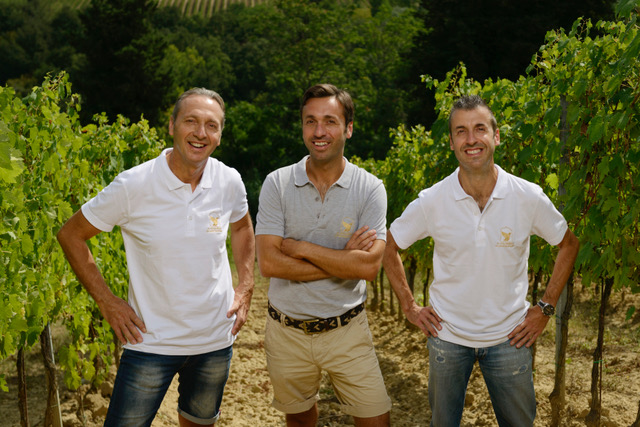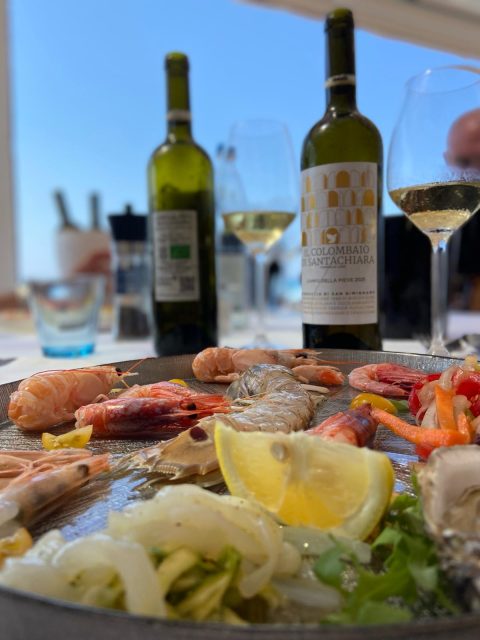This website uses cookies so that we can provide you with the best user experience possible. Cookie information is stored in your browser and performs functions such as recognising you when you return to our website and helping our team to understand which sections of the website you find most interesting and useful.
Divine non-intervention: Dante’s Vernaccia
Tuscan producer Il Colombaio di Santa Chiara guides Filippo Bartolotta through Vernaccia di San Gimignano DOCG, a drink which holds the distinction of being the only wine mentioned in Dante’s Divine Comedy.

Born during the cold vintage of 2002, Il Colombaio di Santa Chiara is a young winery in one of the oldest wine regions in Italy, San Gimignano, which also happens to be the only white DOCG of Tuscany: Vernaccia di San Gimignano.
Like most Italian appellations, also this one has got a truly unbelievable amount of old documents stating the importance of this wine. In this case is actually nothing less than the “Supreme Poet” Dante Alighieri, who in the Purgatory chapter of Italy’s most famous narrative poem, the Divine Comedy, mentions only one wine and that is Vernaccia di San Gimignano. The quote is of course in the “Gourmands circle” in the Purgatory section where Dante sends Pope Martin IV to pay for the sins of gluttony. Here the wine is mentioned in a recipe of Bolsena (lake) eels drowned in Vernaccia.
Of course as a Tuscan-born wine guy I knew about the Dante quotation on Vernaccia, but I never really focused on the details till summer of 2015, when my then-11-year-old son Milo, during a few days at the sea on the Tuscan coast, managed to fish an eel! He joyfully brought the eel to his dad who was having a conversation with other parents at the beach. People started to jump out their deck chairs scared by the “sea snake” and a few mums around me started screaming in horror!
I, on the other hand, was the proudest father. It wasn’t easy to handle that catch of the day, but we made it and we cooked it two ways, one version was an easy pan fried and the second version was stewed with onions and Colombaio di Santa Chiara, Vernaccia di San Gimignano Campo alla Pieve Colomba 2014.
My tasting notes back then read: “mountain flowers, mango and pineapple fruit with a subtle contrast among white peach, almond, lemons and some delicate mineral traits”. I rated the wine 94/100, I loved it.
So when during last summer I was invited to a super laid back restaurant on the beach, a few miles away from where Milo caught his eel, to attend a vertical tasting of Selva Bianca Vernaccia di San Gimignano I couldn’t really say no.
The vineyard Campo alla Pieve is planted at around 400 metres above sea level on beautifully white limestone with sands and clay. The low yields per hectare, around 55 hectolitres, offer a telltale sign of quality.
Fermentations always kick off with indigenous yeast in cement vats where the wine will spend around 1.5 years enjoy fining on its fine lees. Total production is around 8,000 bottles a year.
It’s a small vineyard within a larger vine area which accounts for a total of 22 hectares. The winery is run by three extremely Tuscan brothers: Alessio, Giampiero and Stefano. Very humble and always smile and happy go like types with a very beautiful ancient Tuscan accent which even when they tell a joke it sounds more lyrical like they are reading a poem. They are very focused with a strong agricultural background and a profound work ethic probably derived from their father Mario still very active on the field to supervise this successful organic farm.
They do not belong to any natural wine movement, but they do have a non-interventionist approach.
“We check our wines every day, we let it be on the fine lees as long as possible to make sure our Vernaccia juice gets the most nutritional values as possible,” the brothers tell me during lunch. “We also like to harvest Vernaccia as late as possible and we then do some cryomaceration and we ferment whole bunch as you would do with sparkling wines! Vernaccia is a non aromatic variety so we want to make sure we bring home perfectly ripe grapes and extracting the aromas to the fullest to yield a complex and deep white wine.”
Picking late in these years of global warming could mean overripeness and alcohol burning but their vineyards are high and the active Ca2 helps adding salinity and tension to the wines. I like their creamy and luscious Riserva but for me their true masterpiece is here with this Campo alla Pieve cru. I was gonna forget to mention that Campo alla Pieve means, the field of the parish church. It called Pieve di San Donato, a tiny romanic church built in the XII century, almost 200 years before Dante wrote his Divine Comedy.
The taste test

Related news
Grammy-winning Ariana Grande bewitched by Barolo

